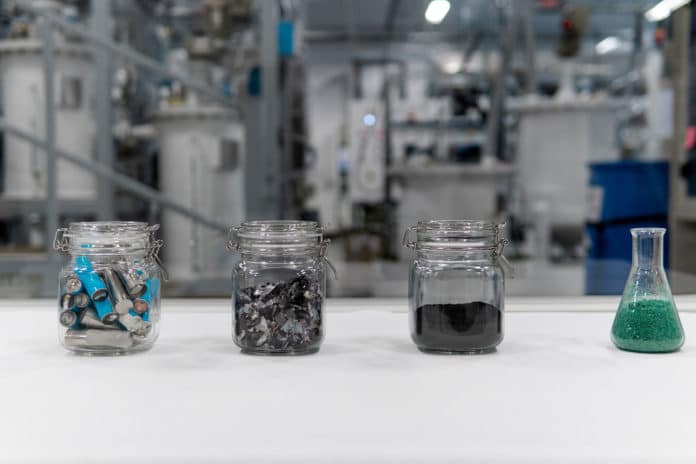A Swedish battery manufacturer Northvolt has produced its first lithium-ion battery cell featuring a nickel-manganese-cobalt (NMC) cathode produced with metals recovered through battery waste recycling. The fully recycled battery is the first step in its Revolt recycling program with which the company wants to distinguish itself from the rest of its competitors.
All the recycling and production processes were completed on a single site at Northvolt Labs in Västerås, Sweden. Specifically, the recycled nickel, manganese, and cobalt metals used in the battery cell were recovered from battery waste through a low-energy hydrometallurgical treatment, which involves the use of an aqueous solution to isolate the metals and separate them from impurities.
“The recycling process can recover up to 95% of the metals in a battery to a level of purity on par with fresh virgin material,” said Emma Nehrenheim, Northvolt’s Chief Environmental Officer and head of Revolt. According to Nortvolt, the electrochemical performance test of cells with recycled materials shows performance on the level of cells with freshly degraded materials.
The company now turns attention to the scaling-up of recycling capabilities to fulfill its aim of producing cells with 50% recycled material by 2030. To secure this, Revolt Ett, the company’s first giga-scale recycling plant under development adjacent to Northvolt Ett gigafactory in Skellefteå, Sweden, will be expanded beyond its initial design to enable recycling of 125,000 tons of batteries per year.
The construction of the recycling facility will begin in the first quarter of 2022 and is scheduled to go into operation in 2023. It will receive incoming material for recycling from two sources – end-of-life batteries from electric vehicles and production scrap from Northvolt Ett. The recovered and processed battery materials will then supply neighboring Northvolt Ett cell manufacturing gigafactory, with recycled material sufficient for 30 GWh of battery production per year. Revolt Ett will also recover other materials such as copper, aluminum, and plastics from the batteries that will be recirculated back into manufacturing flows through local third parties.
